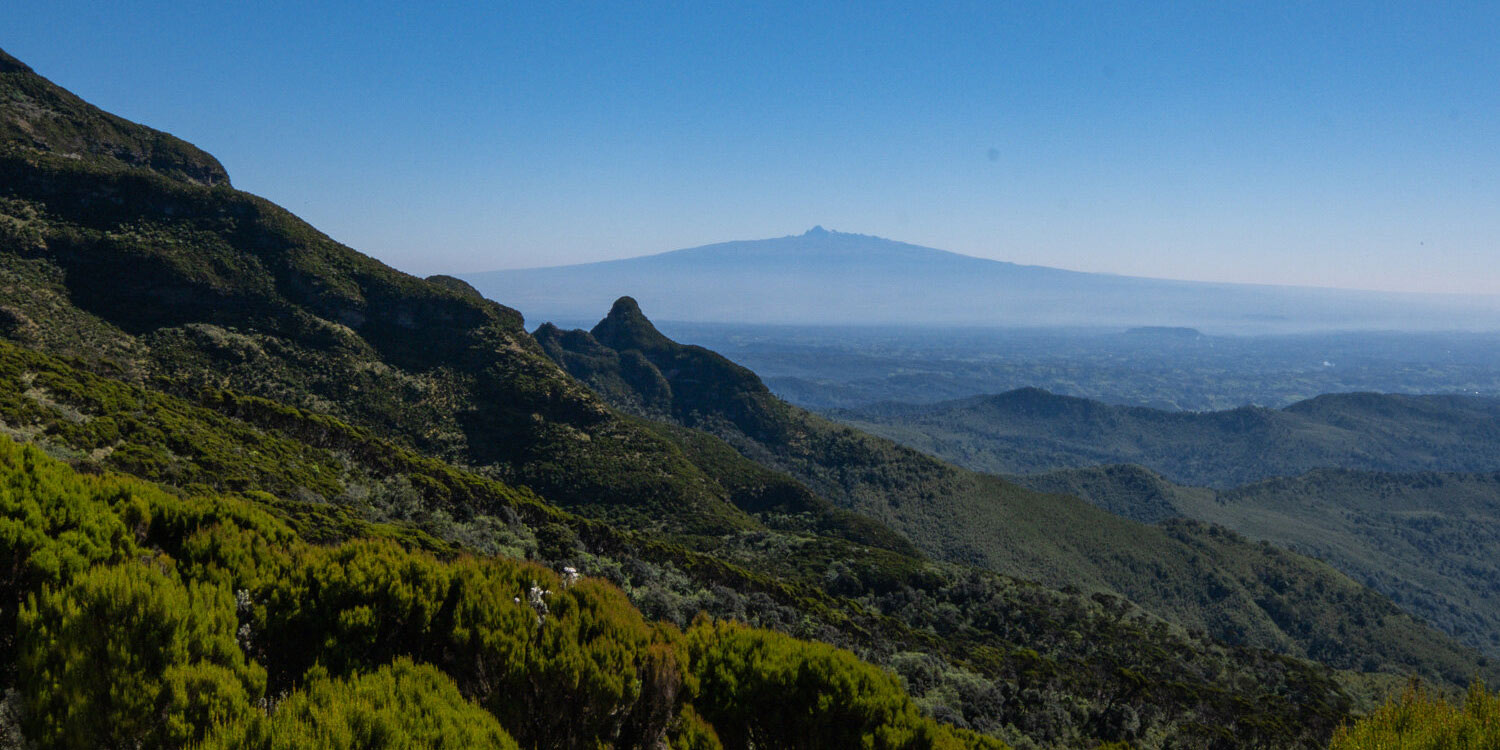Mount Kinangop otherwise known as Ilkinangop is a peak in Kenya’s southern Aberdare Range, about 100 miles (160 kilometers) north of Nairobi and measuring 3906 m high and is the second-highest peak after Mount Satima in the Aberdare Ranges. It’s located within Aberdare National Park.
Kinangop, a dormant volcano, is to the west of the Kinangop Plateau, with the Great Rift Valley beyond. Kinangop is the Aberdares’ second-highest peak, behind Mount Satima. Bamboo woods cover the lower sections of the mountain. Tussock grasses cover the area further up. The main peak is surrounded by broad moorlands and is a granite outcropping. Temperatures are chilly due to the elevation and may drop below freezing at night.
It normally takes less than a day to go to the top and back, depending on where you start, but it can also be part of a larger trip that takes several days and covers other portions of the ranges.
Bamboo forests dominate the lower levels, while tussock grasslands cover the majority of the upper elevations1.
On a clear day, the rift valley, Elephant Hill, Mount Kenya, and the remainder of the Aberdare hills may be seen from the summit.
Mount Kinangop can be used as warm-up to climbing Mount Kenya, for acclimatization purposes.
Activities and things to do
No specific abilities are necessary for trekking and hiking, as well as game viewing, picnics, and bird watching.
Rainy days may necessitate the employment of water-resistant clothing and 4×4 vehicles to reach the hike’s starting point.
Best time to hike Mount Kinangop
The best time to hike mount Kinangop is during the warm and dry months
Mount Kinangop’s location
Mount Kinangop is located at the southernmost point of the Aberdare mountains, with only Elephant Hill to the south.
It’s also a few kilometers south of the equator, within Aberdare National Park, and approximately 160 km from Nairobi, Kenya’s capital city.
Getting there
Hiking, which normally necessitates the presence of an armed KWS ranger.
The trek to the top would be done on foot, as a vehicle would only take you part of the way.
During the rainy season, 4x4s are frequently suggested.

